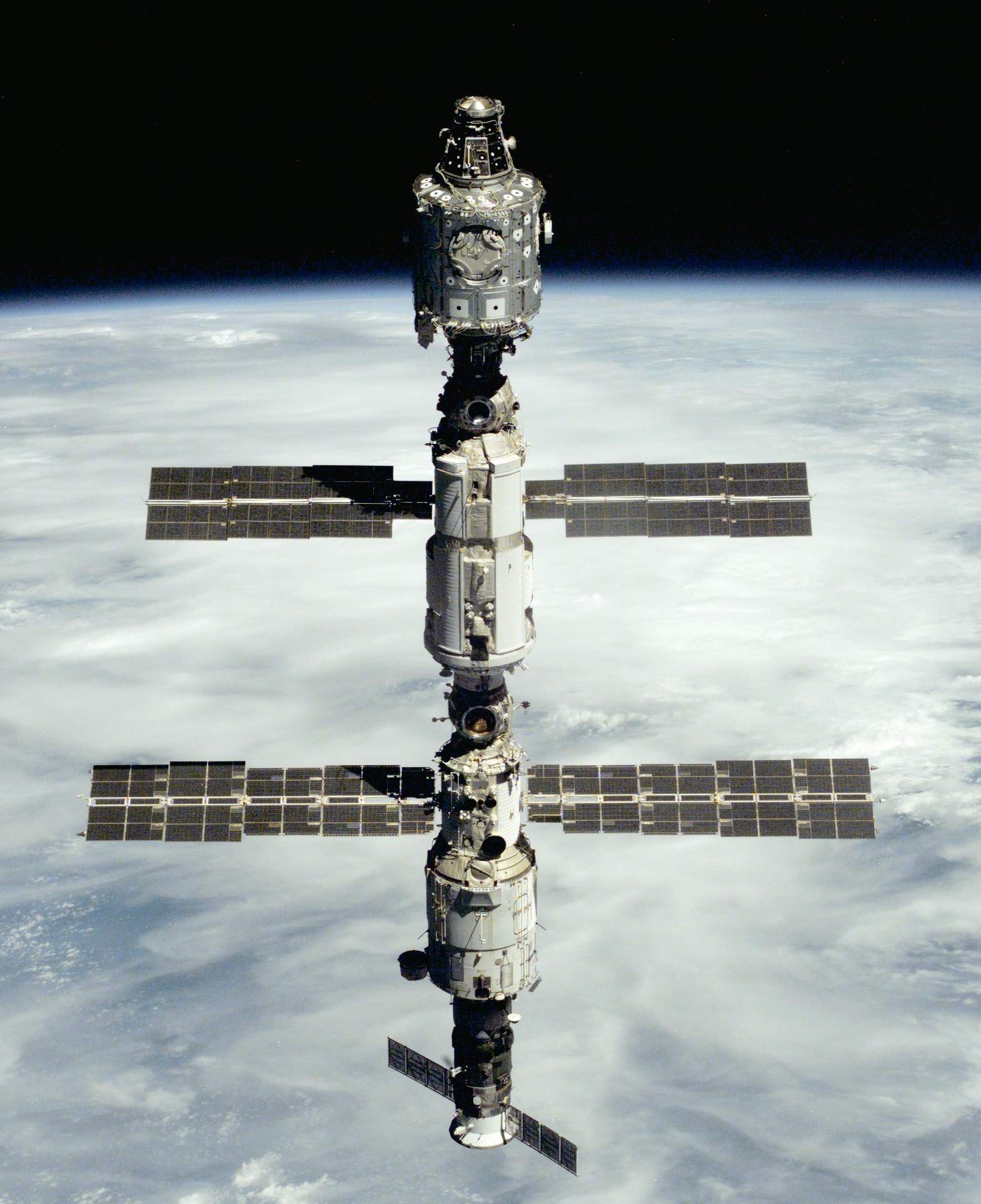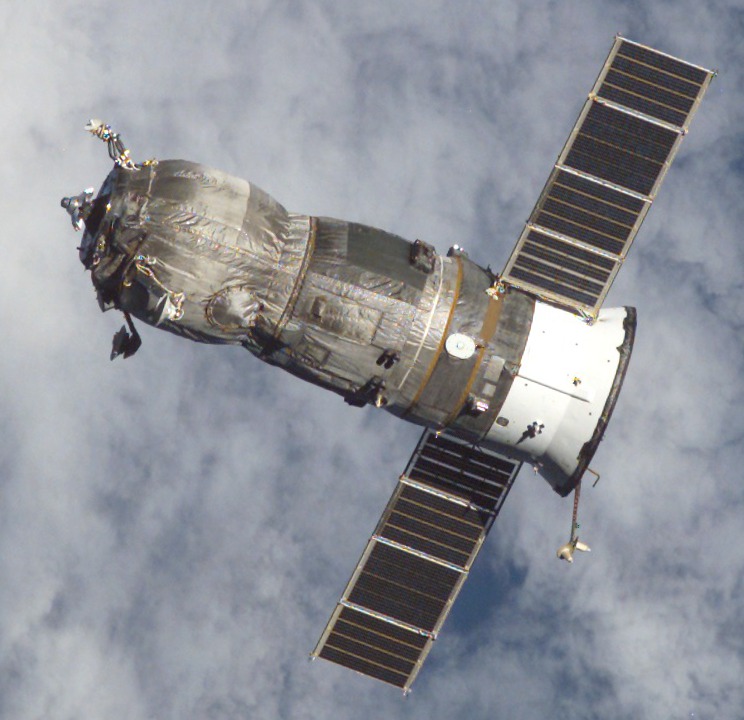|
Progress M-43
Progress M-43 () was a Russian unmanned Progress cargo spacecraft, which was launched in October 2000 to resupply the Mir space station. Launch Progress M-43 launched on 16 October 2000 from the Baikonur Cosmodrome in Kazakhstan. It used a Soyuz-U rocket. The launch had been delayed from the previous day. Docking Progress M-43 docked with Mir on 20 October 2000 at 21:16:05 UTC. Decay It remained in orbit until 29 January 2001, when it was deorbited. The deorbit burn occurred at 02:12 UTC. See also * 2000 in spaceflight This article outlines notable events occurring in 2000 in spaceflight, including major launches and Extravehicular activity, EVAs. Launches , colspan=8, January , - , colspan=8, February , - , colspan=8, March , - ... * List of Progress missions * List of uncrewed spaceflights to Mir References Progress (spacecraft) missions 2000 in Kazakhstan Spacecraft launched in 2000 Spacecraft which reentered in 2001 Spa ... [...More Info...] [...Related Items...] OR: [Wikipedia] [Google] [Baidu] |
Progress (spacecraft)
The Progress (russian: Прогресс) is a Russian expendable cargo spacecraft. Its purpose is to deliver the supplies needed to sustain a human presence in orbit. While it does not carry a crew, it can be boarded by astronauts when docked to a space station, hence it is classified as ''crewed'' by its manufacturer. Progress is derived from the crewed Soyuz spacecraft and launches on the same launch vehicle, a Soyuz rocket. Progress has supported space stations as early as Salyut 6 and as recently as the International Space Station (ISS). Each year there are between three and four Progress flights to the ISS. A Progress remains docked until shortly before being replaced with a new one or a Soyuz (which will use the same docking port). Then it is filled with waste, disconnected, and de-orbited, at which point it burns up in the atmosphere. Due to the variation in Progress vehicles flown to the ISS, NASA uses its own nomenclature where "ISS 1P" means the first Progress spac ... [...More Info...] [...Related Items...] OR: [Wikipedia] [Google] [Baidu] |
Progress M1-4
Progress M1-4, identified by NASA as Progress 2P, was a Progress spacecraft used to resupply the International Space Station. It was a Progress M1 11F615A55 spacecraft, with the serial number 253. Launch and first docking Progress M1-4 was launched by a Soyuz-U carrier rocket from Site 1/5 at the Baikonur Cosmodrome. Launch occurred at 01:32:36 UTC on 16 November 2000. The spacecraft docked with the Nadir port of the ''Zarya'' module at 03:47:42 UTC on 18 November. The Kurs docking system failed during docking, and the manual backup, TORU, was used for the docking. Progress M1-4 remained docked for two weeks before undocking at 16:22:52 UTC on 1 December. Second docking Following its undocking, Progress M1-4 spent 25 days in free flight, prior to redocking with the same port on 26 December at 11:03:13 UTC. Like the original docking, the TORU system was used, as although the fault with the Kurs system had been resolved, the procedure used to abort the original Kurs docking at ... [...More Info...] [...Related Items...] OR: [Wikipedia] [Google] [Baidu] |
Spacecraft Launched In 2000
A spacecraft is a vehicle or machine designed to spaceflight, fly in outer space. A type of artificial satellite, spacecraft are used for a variety of purposes, including Telecommunications, communications, Earth observation satellite, Earth observation, Weather satellite, meteorology, navigation, space colonization, Planetary science, planetary exploration, and Space transport, transportation of Human spaceflight, humans and cargo spacecraft, cargo. All spacecraft except single-stage-to-orbit vehicles cannot get into space on their own, and require a launch vehicle (carrier rocket). On a sub-orbital spaceflight, a space vehicle enters outer space, space and then returns to the surface without having gained sufficient energy or velocity to make a full Earth orbit. For orbital spaceflights, spacecraft enter closed orbits around the Earth or around other Astronomical object, celestial bodies. Spacecraft used for human spaceflight carry people on board as crew or passengers from ... [...More Info...] [...Related Items...] OR: [Wikipedia] [Google] [Baidu] |
Progress (spacecraft) Missions
Progress is the movement towards a refined, improved, or otherwise desired state. In the context of progressivism, it refers to the proposition that advancements in technology, science, and social organization have resulted, and by extension will continue to result, in an improved human condition; the latter may happen as a result of direct human action, as in social enterprise or through activism, or as a natural part of sociocultural evolution. The concept of progress was introduced in the early-19th-century social theories, especially social evolution as described by Auguste Comte and Herbert Spencer. It was present in the Enlightenment's philosophies of history. As a goal, social progress has been advocated by varying realms of political ideologies with different theories on how it is to be achieved. Measuring progress Specific indicators for measuring progress can range from economic data, technical innovations, change in the political or legal system, and questions be ... [...More Info...] [...Related Items...] OR: [Wikipedia] [Google] [Baidu] |
List Of Uncrewed Spaceflights To Mir ...
This is a list of uncrewed spaceflights to Mir. Components of the space station are indicated in green. *A. - Time from docking until debris impact in the Pacific Ocean at approximately 05:59 GMT on 23 March 2001. *B. - From time of launch *C. - Remained attached during deorbit of space station on 23 March 2001. *D. - Decayed naturally See also *Mir *List of Progress flights * List of human spaceflights to Mir *List of human spaceflights to the International Space Station *Uncrewed spaceflights to the International Space Station * List of Mir spacewalks References {{Space exploration lists and timelines * Mir, uncrewed spaceflights Uncrewed spacecraft Mir ''Mir'' (russian: Мир, ; ) was a space station that operated in low Earth orbit from 1986 to 2001, operated by the Soviet Union and later by Russia. ''Mir'' was the first modular space station and was assembled in orbit from 1986 to&n ... [...More Info...] [...Related Items...] OR: [Wikipedia] [Google] [Baidu] |
List Of Progress Missions
This is a list of missions conducted by Progress automated spacecraft. Progress is an uncrewed Russian (previously Soviet) cargo spacecraft which has been used since 1978 to deliver supplies to Soviet space stations Salyut 6, Salyut 7, Mir, and later to the International Space Station. All launches have occurred from the Baikonur Cosmodrome. More than 150 flights have been launched, all except Progress M-12M, Progress M-27M and Progress MS-04/65P have reached their destinations, with no injuries or loss of life after launch; Progress M-12M and MS-04 failed during launch, whereas Progress M-27M experienced a spacecraft loss of attitude control while in orbit. The Progress M-24 spacecraft collided with Mir during a failed docking attempt in 1994, and Progress M-34 caused serious damage to the Spektr module when it drifted off course during a docking test in 1997. The spacecraft uses the automatic Kurs docking system for rendezvous with its destination space station, where ... [...More Info...] [...Related Items...] OR: [Wikipedia] [Google] [Baidu] |
2000 In Spaceflight
This article outlines notable events occurring in 2000 in spaceflight Spaceflight (or space flight) is an application of astronautics to fly spacecraft into or through outer space, either with or without humans on board. Most spaceflight is uncrewed and conducted mainly with spacecraft such as satellites in or ..., including major launches and EVAs. Launches , colspan=8, January , - , colspan=8, February , - , colspan=8, March , - , colspan=8, April , - , colspan=8, May , - , colspan=8, June , - , colspan=8, July , - , colspan=8, August , - , colspan=8, September , - , colspan=8, October , - , colspan=8, November , - , colspan=8, December , - Deep Space Rendezvous EVAs References Footnotes {{Orbital launches in 2000 Spaceflight by year ... [...More Info...] [...Related Items...] OR: [Wikipedia] [Google] [Baidu] |
Kazakhstan
Kazakhstan, officially the Republic of Kazakhstan, is a transcontinental country located mainly in Central Asia and partly in Eastern Europe. It borders Russia Russia (, , ), or the Russian Federation, is a transcontinental country spanning Eastern Europe and Northern Asia. It is the largest country in the world, with its internationally recognised territory covering , and encompassing one-eigh ... to Kazakhstan–Russia border, the north and west, China to China–Kazakhstan border, the east, Kyrgyzstan to Kazakhstan–Kyrgyzstan border, the southeast, Uzbekistan to Kazakhstan–Uzbekistan border, the south, and Turkmenistan to Kazakhstan–Turkmenistan border, the southwest, with a coastline along the Caspian Sea. Its capital is Astana, known as Nur-Sultan from 2019 to 2022. Almaty, Kazakhstan's largest city, was the country's capital until 1997. Kazakhstan is the world's largest landlocked country, the largest and northernmost Muslim world, Muslim-majority cou ... [...More Info...] [...Related Items...] OR: [Wikipedia] [Google] [Baidu] |
Progress M1-3
Progress M1-3, identified by NASA as Progress 1P, was the first Progress spacecraft to visit the International Space Station. It was a Progress-M1 11F615A55 spacecraft, with the serial number 251. Launch Progress M1-3 was launched by a Soyuz-U carrier rocket from Site 1/5 at the Baikonur Cosmodrome. Launch occurred at 16:26:42 UTC on 6 August 2000. The spacecraft docked with the aft port of the '' Zvezda'' module at 20:12:56 UTC on 8 August. Undocking It remained docked for 75 days before undocking at 04:04:49 UTC on 1 November to make way for Soyuz TM-31. It was deorbited at 07:05:00 UTC on the same day. The spacecraft burned up in the atmosphere over the Pacific Ocean, with any remaining debris landing in the ocean at around 07:53:20 UTC. Progress M1-3 carried supplies to the International Space Station. It was unloaded during the Space Shuttle missions STS-106 and STS-92 STS-92 was a Space Shuttle mission to the International Space Station (ISS) flown by Space ... [...More Info...] [...Related Items...] OR: [Wikipedia] [Google] [Baidu] |
Progress-M
Progress-M (russian: Прогресс-М, GRAU indices 11F615A55 and 11F615A60), also known as Progress 7K-TGM, is a Russian, previously Soviet spacecraft which is used to resupply space stations. It is a variant of the Progress spacecraft, originally built in the late 1980s as a modernised version of the Progress 7K-TG spacecraft, using new systems developed for the Soyuz-T and Soyuz-TM spacecraft. The 11F61560 variant incorporated further modernisation, with digital flight control systems replacing the earlier analogue ones. The older 11F615A55 spacecraft outlived the newer 11F615A60. The final Progress-M, Progress-M-UM, was launched on 24 November 2021. The first forty three Progress-M spacecraft were used to resupply Mir, with subsequent spacecraft flying to the International Space Station. , eighty seven spacecraft have been launched, with sixty seven using the older model, and twenty using the newer version. Launches of the 11F615A60 are continuing. One 11F615A60, ... [...More Info...] [...Related Items...] OR: [Wikipedia] [Google] [Baidu] |
Low Earth Orbit
A low Earth orbit (LEO) is an orbit around Earth with a period of 128 minutes or less (making at least 11.25 orbits per day) and an eccentricity less than 0.25. Most of the artificial objects in outer space are in LEO, with an altitude never more than about one-third of the radius of Earth. The term ''LEO region'' is also used for the area of space below an altitude of (about one-third of Earth's radius). Objects in orbits that pass through this zone, even if they have an apogee further out or are sub-orbital, are carefully tracked since they present a collision risk to the many LEO satellites. All crewed space stations to date have been within LEO. From 1968 to 1972, the Apollo program's lunar missions sent humans beyond LEO. Since the end of the Apollo program, no human spaceflights have been beyond LEO. Defining characteristics A wide variety of sources define LEO in terms of altitude. The altitude of an object in an elliptic orbit can vary significantly along the ... [...More Info...] [...Related Items...] OR: [Wikipedia] [Google] [Baidu] |




